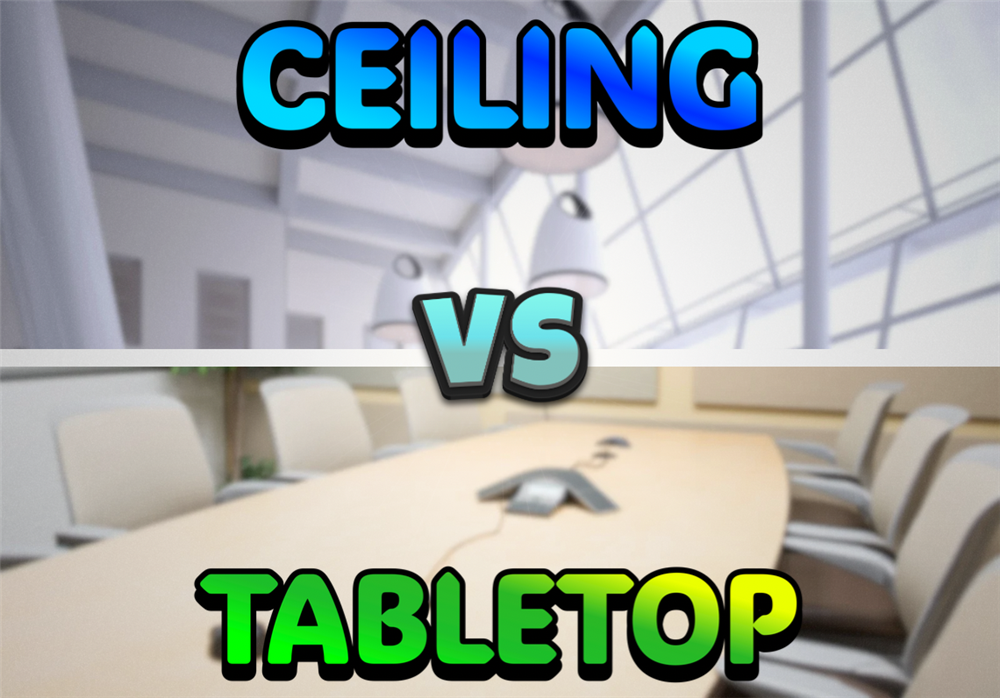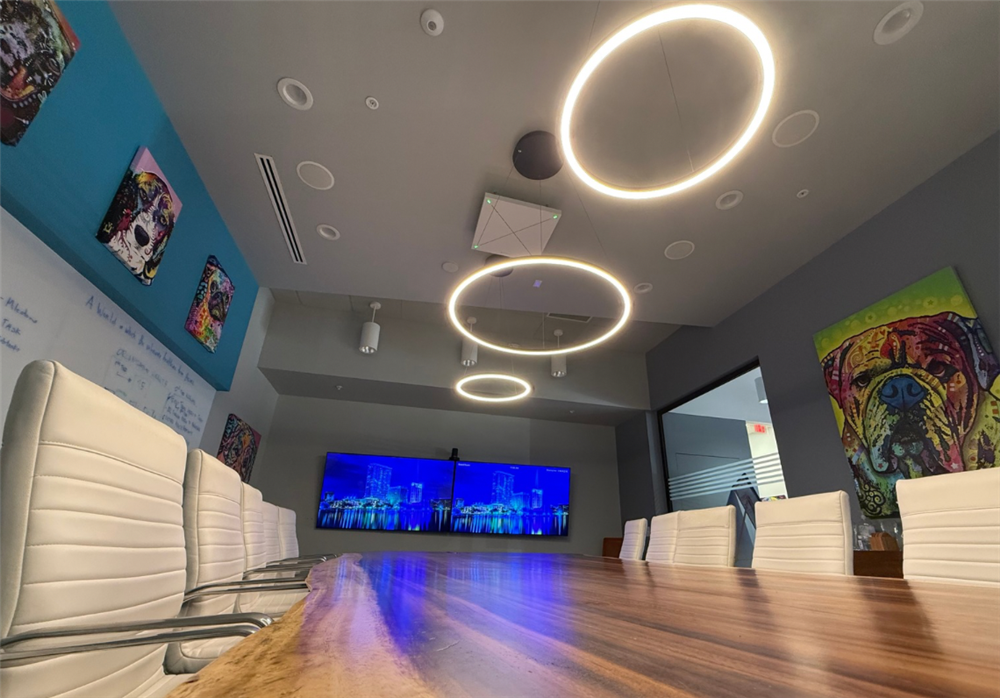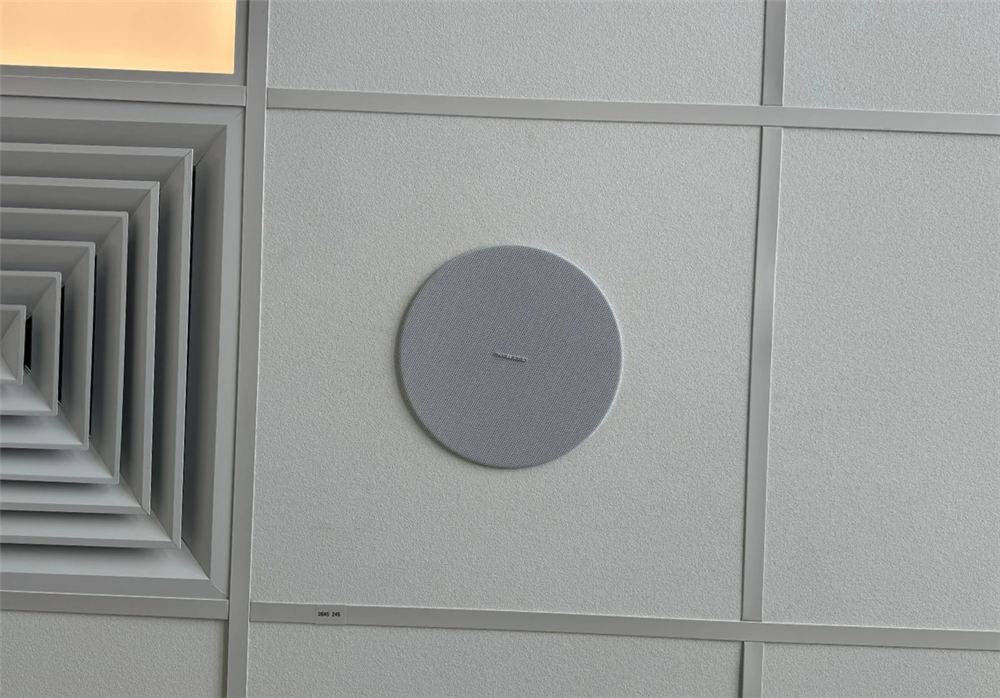By:
Ceiling vs. Tabletop Audio
Aug 08, 2025

Ceiling vs. Tabletop Audio for Conference Rooms: What’s Better?
When it comes to designing a conference room, one of the most overlooked decisions is how audio is both captured and delivered. Should you go with ceiling speakers and microphones, or place everything on the table? The short answer: it depends on the space, use case, and how much you want users to think about the technology. In this post, we’ll break down the pros and cons of ceiling-mounted vs. tabletop audio solutions. All while explaining when each approach makes the most sense.
Ceiling-Mounted Audio: Pros and Cons
Tabletop Audio: Pros and Cons
-
- Clutter and cable mess: Tabletop gear can look messy, especially with power bricks, adapters, and exposed wires.

Real-World Example: Executive Boardroom Upgrade
So, Which Should You Choose?
|
|
|
Clean look and no table clutter
|
|
Plug-and-play, low budget setup
|
|
Flexibility in room layout
|
|
|
|
|
Consistent sound with minimal effort
|
|
The best AV systems match your space, your users, and your priorities. The reality is that most conference rooms are switching out their tabletop gear. It’s not that tabletop gear isn't a great option for the reasons noted above, but the future is here, and ceiling placed gear is getting increasingly powerful. Most of our newer projects rely on ceiling audio solutions regardless of the size of the room.
Need help deciding what’s right for your room? Contact Teer Audio Visual for a consultation. We’ll help you design a solution that’s clear, reliable, and easy to use no matter where the mics/speakers live.
